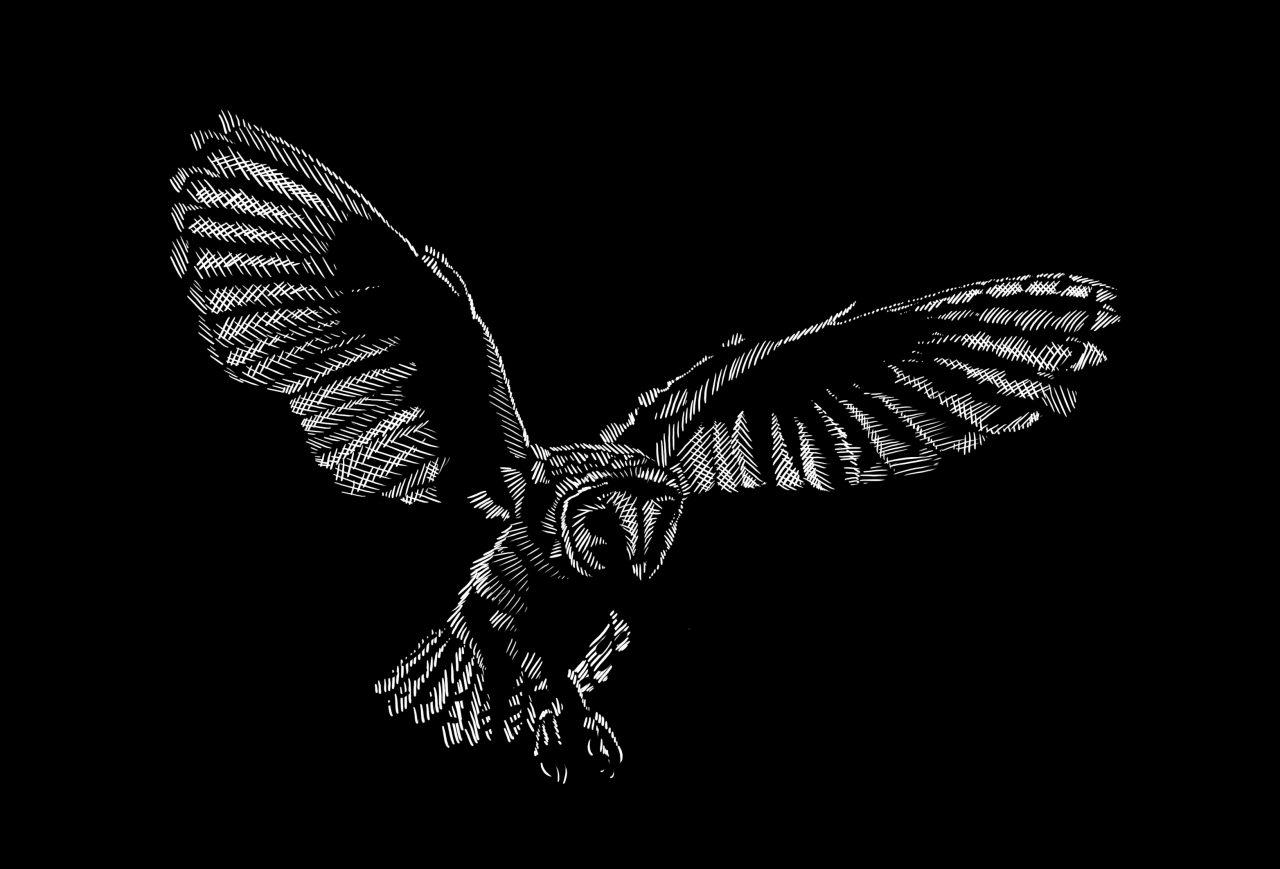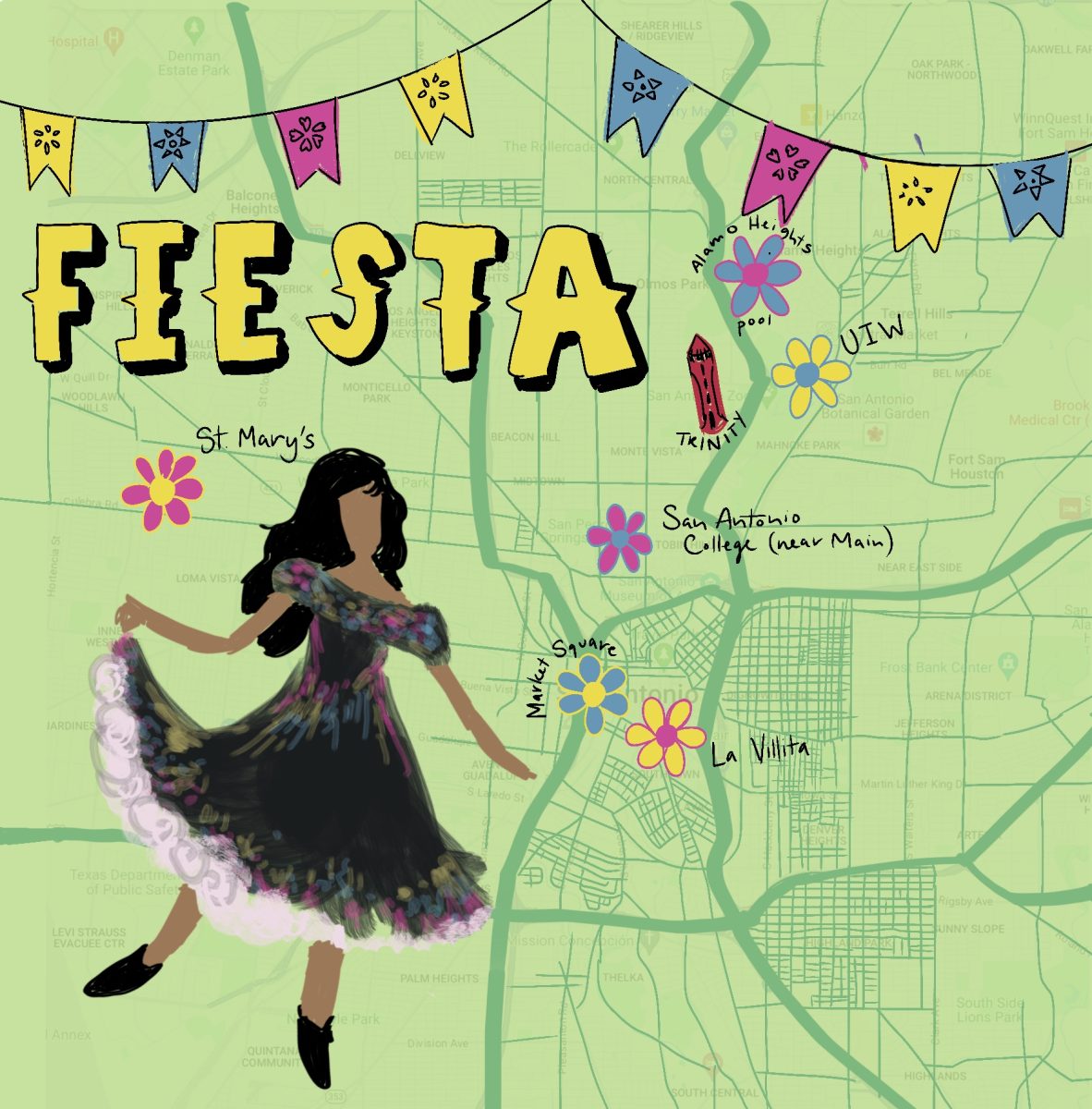Illustration by Andrea Nebhut
Mexican culture is often alluded to when speaking of urban legends in Texas; however, two points should be made clear when thinking of their historical context. One, these stories have origins in indigeneity, and two, in our culture, these stories are not necessarily “urban legends,” but truths that are integral to understanding the way our community functions. Thus, I will refrain from calling them urban legends, but instead, describe them as stories that have been shared and passed on generationally. The stories I’m about to share are real-life experiences from people in my hometown, and they require cultural understanding at the very least.
We can begin these stories by talking about the infamous lechuza. A lechuza, literally translated, means owl; however, the term has taken on a more sinister connotation. A lechuza, simply put, is a white owl that is possessed by a person. I’ll refrain from using the word “witch,” because it conjures up an image of someone who looks the part of a witch when, in reality, the most unsuspecting member of a community can be a culprit.
There continues to be a lot of mystery over how a human being possesses an owl. Questions like, “Where does the physical body of the person go when they become the lechuza?” have plagued our communities for decades. It seems that if you want to know the truth, you’ll have to meet the friend of a friend of a friend. There’s no “real” answer, but we do know some things for certain.
First, lechuzas make the sound of a crying infant in order to attract your attention. If you hear them, you are in immediate danger of being attacked, or worse, killed. If you see the lechuza, you must look away as quickly as you can. Looking at it will make it angrier, and sometimes, its face can begin to take the shape of a woman.
A popular belief amongst the Mexican community is that if you kill the lechuza, you kill the real person inhabiting it. And when you hear of a person’s sudden, unexplained death, you can start piecing together who it was that was after you. Another belief is that while the lechuza is out hunting, the physical body of the human is in a locked room, lying down and unconscious.
There are even ways you can try to figure out who inhabits a lechuza that is after you. There is a secret prayer that I won’t reveal too much about — but it exists if you search for it — that can help you identify who’s harming you. Simply put, when you recite the prayer, the next day whoever was inhabiting the lechuza will be prompted to come to your front door and ask, “Can I have [a very specific item]?” It is then you will know who has been attempting to harm you. There’s another prayer (undisclosed to the public) that will allegedly cause the lechuza to fall out of the sky and shape itself back into the person right in front of you. This theory is perhaps the scariest because you’ll both know why you’re there. What do you do when you’re face to face with the person who has hurt you? What will they do?
Another popular story in my community is that of the duende. Duende translates to goblin and is used to describe tiny gnome-like creatures who attack and kidnap you if you invade their spaces; most often the jungle, forest or other isolated areas of nature. There are countless YouTube videos that claim to have captured the duende in action, most of which seem to be fake.
In fact, it seems that the people who have real-life encounters with these creatures often keep it to themselves out of embarrassment. A few years ago, a local member of our community came forward with his duende experiences after months of people wondering why he always returned injured from the mountains. After lying that the bruises were from his own clumsiness, he revealed the real culprit: the violent duendes of the mountains.
The history of these creatures, however, runs much deeper than this individual story. Swimming through Actun Tunichil Muknal cave in Belize over the summer, our guide led us to a black pot with a tiny monkey-like animal on it. The “monkey” was actually a tataduende, a spirit that protects the jungle and other forms of nature. The Mayan word “Tata” means older one. If the duende kidnaps someone, the individual is supposed to hide their thumbs and show their four fingers so the duende will believe they are alike and set them free.
What these two stories have in common is that they were never considered urban legends until someone who wasn’t us started writing about them. “Urban legend,” I suppose, is just another way to protect ourselves from acknowledging that evil forces reside by us, closer than we think.







